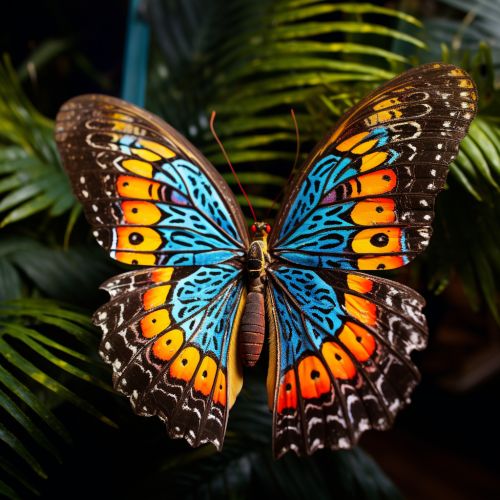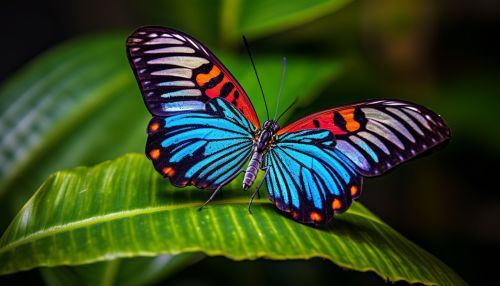The Evolution of Mimicry in Butterflies
Introduction
Mimicry, a phenomenon where an organism evolves to resemble another, is a fascinating aspect of the natural world. In the realm of butterflies, this evolutionary strategy has been employed with remarkable effect. The evolution of mimicry in butterflies is a complex process, involving a myriad of genetic, environmental, and ecological factors. This article delves into the intricate mechanisms and evolutionary pathways that have led to the emergence of mimicry in butterflies.
Understanding Mimicry
Mimicry in butterflies is a survival strategy that involves the development of physical characteristics and behaviors that imitate those of another species or environmental feature. This strategy is employed by butterflies to deceive predators, gain access to resources, or achieve other survival advantages. The two main types of mimicry observed in butterflies are Batesian and Müllerian.
Batesian Mimicry
Batesian mimicry involves a harmless species evolving to resemble a harmful or unpalatable species to deter predators. This type of mimicry is named after the British naturalist Henry W. Bates, who first described it in the 19th century.
Müllerian Mimicry
Müllerian mimicry, on the other hand, involves two or more harmful species evolving to resemble each other. This form of mimicry is named after the German naturalist Fritz J. Müller, who first proposed the concept.
Evolutionary Mechanisms
The evolution of mimicry in butterflies is driven by several mechanisms, including natural selection, sexual selection, and genetic drift. These mechanisms interact in complex ways to shape the evolution of mimicry.
Natural Selection
Natural selection is the primary driver of mimicry in butterflies. Predators learn to avoid butterflies that are harmful or unpalatable, and butterflies that resemble these avoided species are more likely to survive and reproduce. Over time, this leads to the evolution of mimicry.
Sexual Selection
Sexual selection can also play a role in the evolution of mimicry. In some butterfly species, males prefer to mate with females that resemble harmful or unpalatable species, leading to the evolution of mimicry in the female butterflies.
Genetic Drift
Genetic drift, the random change in allele frequencies over time, can also contribute to the evolution of mimicry. However, its role is generally considered to be less significant than that of natural selection and sexual selection.
Genetic Basis of Mimicry
The genetic basis of mimicry in butterflies is complex and involves multiple genes. These genes control the development of wing patterns, colors, and other physical traits that contribute to mimicry.


Ecological Factors
Ecological factors, such as predation pressure and habitat characteristics, also play a crucial role in the evolution of mimicry. High predation pressure can accelerate the evolution of mimicry, while certain habitat characteristics can facilitate or hinder the development of mimicry.
Evolutionary Pathways
The evolution of mimicry in butterflies can follow several pathways, depending on the specific ecological and genetic context. These pathways include the gradual evolution of mimicry through small incremental changes, the rapid evolution of mimicry through large mutational changes, and the evolution of mimicry through the recombination of existing genetic variants.
Conclusion
The evolution of mimicry in butterflies is a fascinating and complex process, shaped by a multitude of genetic, ecological, and evolutionary factors. Understanding this process not only provides insights into the remarkable diversity and adaptability of butterflies, but also sheds light on the broader mechanisms and dynamics of evolution.
